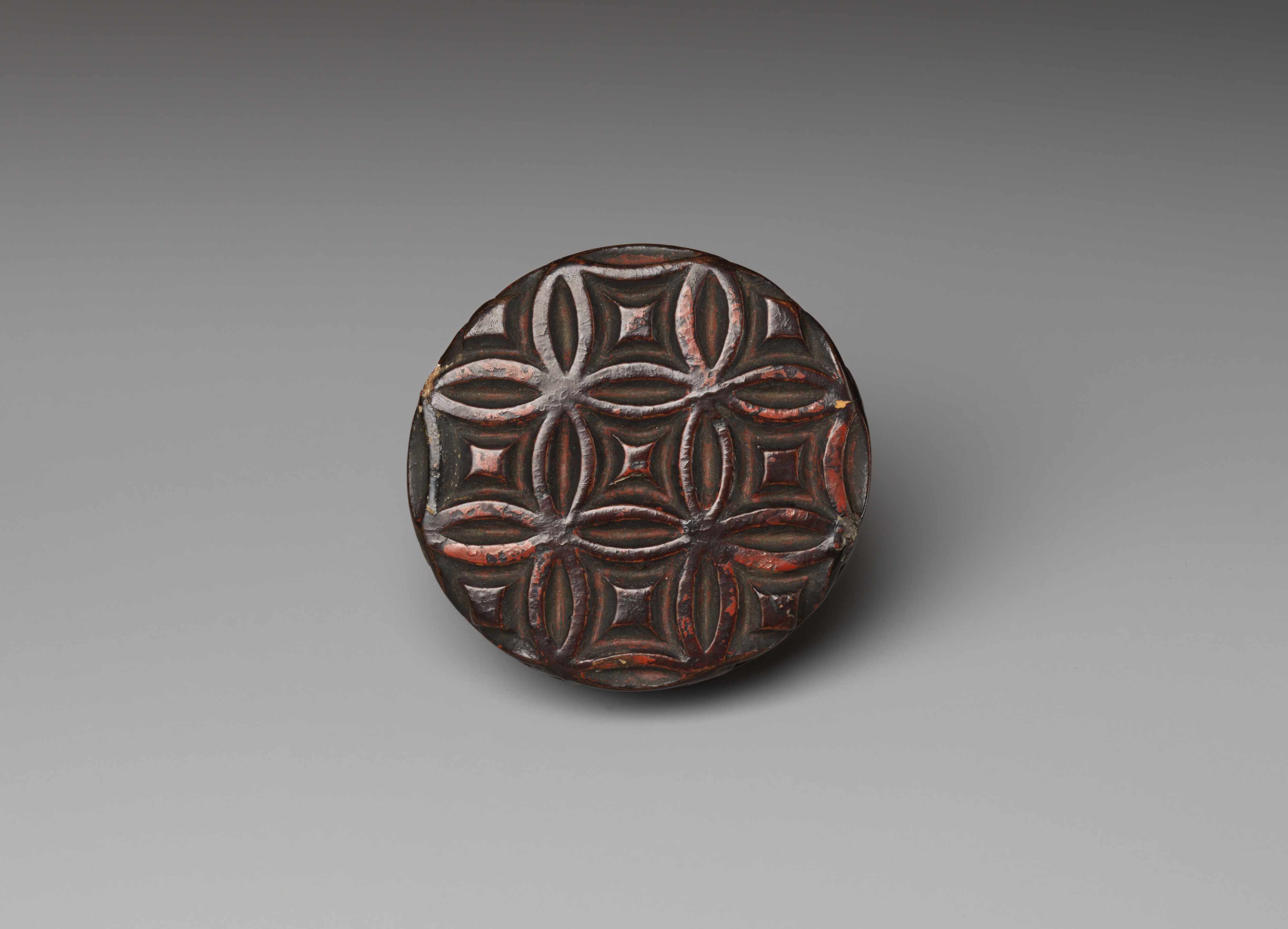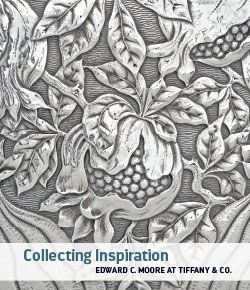Incense Box (Kōgō) with Interlinked Circles (Shippō) Pattern
Japanese artisans developed “Kamakura carving” in the Muromachi period (1392–1573) to imitate Chinese carved lacquer. In this technique, patterns are carved into wood and then coated with layers of red and black lacquer. The incense box here has an auspicious pattern of interlinked circles (shippō) in a continuous, chainlike motif that symbolizes prosperity and continuation. Moore often used the pattern to embellish silverware.
Due to rights restrictions, this image cannot be enlarged, viewed at full screen, or downloaded.
This artwork is meant to be viewed from right to left. Scroll left to view more.




